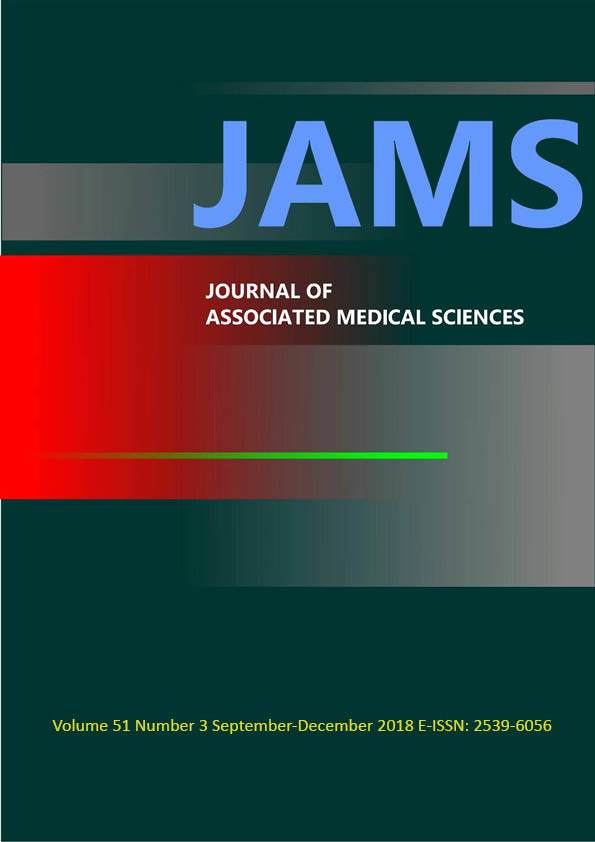X-ray scatter correcting methods for digital radiographic imaging
Main Article Content
Abstract
X-ray scattering correction method has been the primary means of enhancing radiographic images for quite some time. X-ray scattering is major deterioration factor that decreases image contrast and increases the image granularity in a radiographic image. However, this can be eliminated by using scatter reduction techniques like air gaps and anti-scatter grids, but the two techniques are cumbersome, and increases patient’s radiation dosages. Moreover, it can also cause artifacts whenever anti-scatter grids are used. Recently, commercial software packages have been developed from various x-ray equipment manufacturers that have eliminated the need for anti-scatter grid usage. These recent advancements also allow lower patient dosages. Objective of this review is to summarize and review x-ray scattering and image processing algorithms used for enhancing the performance of the digital image in general radiography. Articles on digital image processing and commercial software for x-ray scatter correcting were thoroughly reviewed to complete this summary. These articles indicate that scatter correcting methods are based on principles of physics which involve of mathematical models of radiographic formation and x-ray scattering estimation methods. One simple model has the total energy absorbed at an image detector forming a primary x-ray plus a scattered x-ray whereby the point spread function of the scattered x-ray is used. Almost all estimations of x-ray scatter are computer simulations. The digital image post-processing algorithms are important factors in the x-ray scattering correction process. Their algorithms are related to mathematical models and the amount of scattering x-rays in an image, and are selected for use based on these considerations. These algorithms include subtraction, de-convolution, and anti-scatter grid simulation techniques. Therefore, x-ray scatter correcting methods for a digital radiographic imaging may be used in general radiography since their image quality is comparable to the images that have used anti-scatter grids, but are also beneficial since radiation dosage can be reduced using this process.
Article Details

This work is licensed under a Creative Commons Attribution-NonCommercial-NoDerivatives 4.0 International License.
Personal views expressed by the contributors in their articles are not necessarily those of the Journal of Associated Medical Sciences, Faculty of Associated Medical Sciences, Chiang Mai University.
References
[2] Detlef Mentrup, Ulrich Neitzel, Sascha Jockel, Hanns-Ingo Maack, Bernd Menser. Grid-like contrast enhancement for bedside chest radiographs: acquired without anti-scatter grid. European Society of Radiology 2014 March. :1-15
[3] Ryohei ITO, Tatsuya TAKAGI, Keita YOSHIDA, Akira ISHISAKA. Development of the Intelligent Grid Scattered X-ray Correction Processing System for Digital Radiography. KONICA MINOLTA TECHNOLOGY REPORT 2016 .vol.13: 52-56
[4] Scatter Correction Excellent image contrast without a grid. Report Scatter Correction reduces radiation dose and offers better ergonomics. Canon Medical Group 2017. Available from: https://www.mediel.se/assets/download.cfm?file=5878A7AB84FB43402106C575658472FA
[5] Advanced Applications for GC85A. Samsung Healthcare Global Newsletter.[cited 2017 Dec. 17]. Available from: https://www.samsung.com/global/business/healthcare/Newsletter/201604/gc85a.html
[6] Horst Aichinger, Joachim Dierker, Sigrid Joite-Barfuß, Manfred Säbel. Radiation Exposure and Image Quality in X-ray Diagnostic Radiology: Physical Principles and Clinical Applications (2nd). Springer Heidelberg Dordrecht London. New York; 2012
[7] Quinn B. Carroll. Radiography in the Digital Age Physics Exposure Radiation Biology. Charles C Thomas Publisher. LTD. Springfield Illinois U.S.A.; 2011
[8] Elena Marimón, Hammadi Nait-Charif, Asmar Khan, Philip A. Marsden, Oliver Diaz. Scatter reduction for grid-less mammography using the convolution based image post-processing technique. Available from: Society of Photo-Optical Instrumentation Engineers https://spie.org/Publications/Proceedings/Paper/10.1117/12.2255558
[9] John G Webster, E Russell Ritenour, Slavik Tabakov, Kwan-Hoong Ng. Webb’s Physics of Medical Imaging (Second Edition). CRC Press Taylor&Francis Group Boca Raton London New York; 2012
[10] D.R. Dance, S.Christofides, A.D.A. Maidment, I.D. McLean, K.H. Ng. Diagnostic Radiology Physics A Handbook for Teachers and Students. IAEA; 2014
[11] Love, L. A. and Kruger, R. A. Scatter estimation for a digital radiographic system using convolution filtering. Medical Physics 1987; 14(2); 178-185.
[12] GRIDLESS IMAGING FROM ANY DIGITAL RADIOGRAPHY SYSTEM. IBEX Innovations Ltd. 2017. Available from: https://ibexinnovations.co.uk/uploads/004-MM-006%20Rev%201.02%20White%20Paper%20-%20SRM.pdf
[13] Atila Ersahim, Sabee Molloi, Yao-Jin Qian. A Digital Filtration Technique for Scatter-Glare Correction Based on Thickness Estimation. IEEE transactions on Medical imaging. 1995; 14(3): 587-595
[14] Fieselmann, A., Fischer, D., Hilal, G., Dennerlein, F., Mertelmeier, T., and Uhlenbrock, D.. Full-field digital mammography with grid-less acquisition and software-based scatter correction: investigation of dose saving and image quality. Available from: Society of Photo-Optical Instrumentation Engineers. https://imaging.ubmmedica.com/all/editorial/diagnosticimaging/pdfs/RePrint_PRIME.pdf
[15] Danyk A. Y., Radchenko S. P., Sudakov O. O. Optimization of Grid-less Scattering Compensation in X-ray Imaging: Simulation study. IEEE 37th 2017. International Conference on Electronics and Nanotechnology
[16] O Diaz, D R Dance, K C Young, P Elangovan, P R Bakic, K Wells. Estimation of scatter radiation in digital breast Tomosynthesis. Physics in Medicine & Biology. 2014; 59(15): 4375-90
[17] K. Kim, S. Kang, H. Cho, W. Kang, C. Seo, C. Park, D. Lee, H. Lim, H. Lee, G. Kim, S. Park, J. Park , W. Kim, D. Jeon, T. Woo, J. Oh. A model-based radiography restoration method based on simple scatter-degradation scheme for improving image visibility. Optics and Lasers in Engineering. 2018; 60-66.
[18] Boyu Wang, Kevin Yager, Dantong Yu, and Minh Hoai. X-ray Scattering Image Classification Using Deep Learning. IEEE Winter Conference on Applications of Computer Vision . 2017
[19] Pierre Gravel, Gilles Beaudoin, Jacques A. De Guise. A Method for Modeling Noise in Medical Images. IEEE TRANSACTIONS ON MEDICAL IMAGING. 2004. 23( 10); 1221-1232
[20] J L Ducote, S M Molloi. Scatter correction in digital mammography based on image deconvolution. Physics in Medicine & Biology. 55 1295. Institute of Physics and Engineering in Medicine (IPEM)
[21] V. Tóth, C. Brieskorn, B. Renger, D. Mentrup, S. Jockel, F.Lohöfer, M. M. Schwarz, E. J. Rummeny, P. B. Noël. Evaluation of dose reduction potentials of a novel scatter correction software for bedside chest x-ray imaging. ECR 2015. European Society of Radiology. Electronic Presentation Online System.


